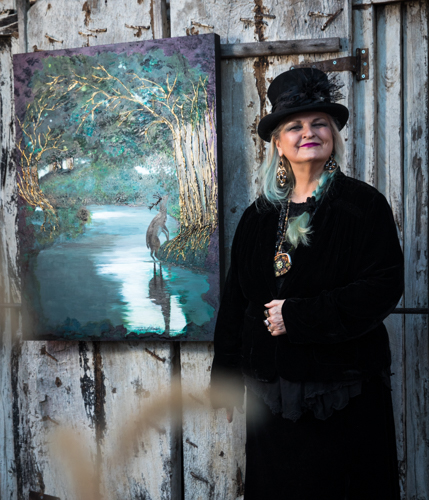 When Dianna Rostad first discovered the history of the orphan trains, she felt a special kinship to the street kids from 1920s New York. Dianna worked as a case manager for youth in South Central Los Angeles after the riots in the 1990s, so when she saw the pictures of these orphans on old steam trains, she recognized that look of determination and hope, and their stories began to take root in her heart.
When Dianna Rostad first discovered the history of the orphan trains, she felt a special kinship to the street kids from 1920s New York. Dianna worked as a case manager for youth in South Central Los Angeles after the riots in the 1990s, so when she saw the pictures of these orphans on old steam trains, she recognized that look of determination and hope, and their stories began to take root in her heart.
 The orphan train was a fascinating adoption phenomena that took place between 1853 and 1929. There were many catalysts to this; the civil war, but the most intriguing is the building of the railroad itself. In the mid 19th century, the United States began surveying for railroad lines to reach the Pacific, but railroad barons needed people to go West. They needed towns, commerce, and the like to make building railroads a successful venture. But folks living on the eastern seaboard were wise to the dangers of living out west, so the railroad barons sent posters to Europe and the rest of the world to advertise “free land” and portrayed America as the “land of milk and honey.” And people came, ships full of them. New York became overwhelmed with immigration as over 4 million people came to the US in the last half of the 19th century. Our eastern seaboard became overcrowded with too many laborers and not enough jobs. Food became scarce and young children were forced to work or were abandoned. These folks brought their dreams, their desire to work hard, but often what they discovered when they got here was no way to go west without money. All these dire conditions led people to abandon children on the doorsteps of the wealthy, churches, and finally to the growing institutions such as the New York Foundling Hospital run and the Children’s Aid Society. It’s estimated that 30,000 children at one time were living on the streets of New York, and it wasn’t long before these kids formed gangs, began filching food, sleeping in alleys, and banding together to survive.
The orphan train was a fascinating adoption phenomena that took place between 1853 and 1929. There were many catalysts to this; the civil war, but the most intriguing is the building of the railroad itself. In the mid 19th century, the United States began surveying for railroad lines to reach the Pacific, but railroad barons needed people to go West. They needed towns, commerce, and the like to make building railroads a successful venture. But folks living on the eastern seaboard were wise to the dangers of living out west, so the railroad barons sent posters to Europe and the rest of the world to advertise “free land” and portrayed America as the “land of milk and honey.” And people came, ships full of them. New York became overwhelmed with immigration as over 4 million people came to the US in the last half of the 19th century. Our eastern seaboard became overcrowded with too many laborers and not enough jobs. Food became scarce and young children were forced to work or were abandoned. These folks brought their dreams, their desire to work hard, but often what they discovered when they got here was no way to go west without money. All these dire conditions led people to abandon children on the doorsteps of the wealthy, churches, and finally to the growing institutions such as the New York Foundling Hospital run and the Children’s Aid Society. It’s estimated that 30,000 children at one time were living on the streets of New York, and it wasn’t long before these kids formed gangs, began filching food, sleeping in alleys, and banding together to survive.
 A Methodist minister by the name of Charles Loring Brace and a group of businessmen formed The Children’s Aid Society to combat the problem of homeless children. They built an orphanage and newsboy lodgings, and then finally came up with the idea of sending kids west on trains to families who could teach them a trade, take them to church, give them wholesome food, and fresh air and sunshine. The children were cleaned up with two sets of clothes; the spare carried in a cardboard suitcase. They were escorted by two people from the Children’s Aid Society. Children from infants to eighteen year olds went west on trains. At each stop, posters advertised the children’s arrival date. Two liaisons at each stop would be brought on board to help facilitate and manage the adoption process. These children were sometimes taken in for work, and sometimes adopted as real family members, but there were two different contracts for children that helped to protect them. The orphan train can be seen as a work program or at worst indentured servitude. But children living on the streets of cities fared far worse. Over 120,000 children left on the orphan trains and arrived at homes in 45 states. The last orphan train arrived in Texas in 1929, officially closing out an era of foster care in the United States.
A Methodist minister by the name of Charles Loring Brace and a group of businessmen formed The Children’s Aid Society to combat the problem of homeless children. They built an orphanage and newsboy lodgings, and then finally came up with the idea of sending kids west on trains to families who could teach them a trade, take them to church, give them wholesome food, and fresh air and sunshine. The children were cleaned up with two sets of clothes; the spare carried in a cardboard suitcase. They were escorted by two people from the Children’s Aid Society. Children from infants to eighteen year olds went west on trains. At each stop, posters advertised the children’s arrival date. Two liaisons at each stop would be brought on board to help facilitate and manage the adoption process. These children were sometimes taken in for work, and sometimes adopted as real family members, but there were two different contracts for children that helped to protect them. The orphan train can be seen as a work program or at worst indentured servitude. But children living on the streets of cities fared far worse. Over 120,000 children left on the orphan trains and arrived at homes in 45 states. The last orphan train arrived in Texas in 1929, officially closing out an era of foster care in the United States.
 Dianna Rostad writes bighearted novels for wide audiences. You Belong Here Now is her debut novel, published by William Morrow/Harper Collins.
Dianna Rostad writes bighearted novels for wide audiences. You Belong Here Now is her debut novel, published by William Morrow/Harper Collins.
Learn more about YOU BELONG HERE NOW on Dianna’s website: www.diannarostad.com
- Welcome to the December 2024 Cover Issue of the Pulpwood Newsletter! - December 1, 2024
- New Author Members – November 2024 - December 1, 2024
- Welcome to the November 2024 Cover Issue of the Pulpwood Newsletter! - November 2, 2024
- New Author Members – October 2024 - October 31, 2024
- Welcome to the October 2024 Cover Issue of the Pulpwood Newsletter! - October 1, 2024
- Welcome to the September 2024 Cover Issue of the Pulpwood Newsletter! - September 1, 2024
- New Author Members – August 2024 - August 19, 2024
- Welcome to the August 2024 Cover Issue of the Pulpwood Newsletter! - August 5, 2024
- New Author Members – July 2024 - July 30, 2024
- Welcome to the July 2024 Cover Issue of the Pulpwood Newsletter! - July 1, 2024




